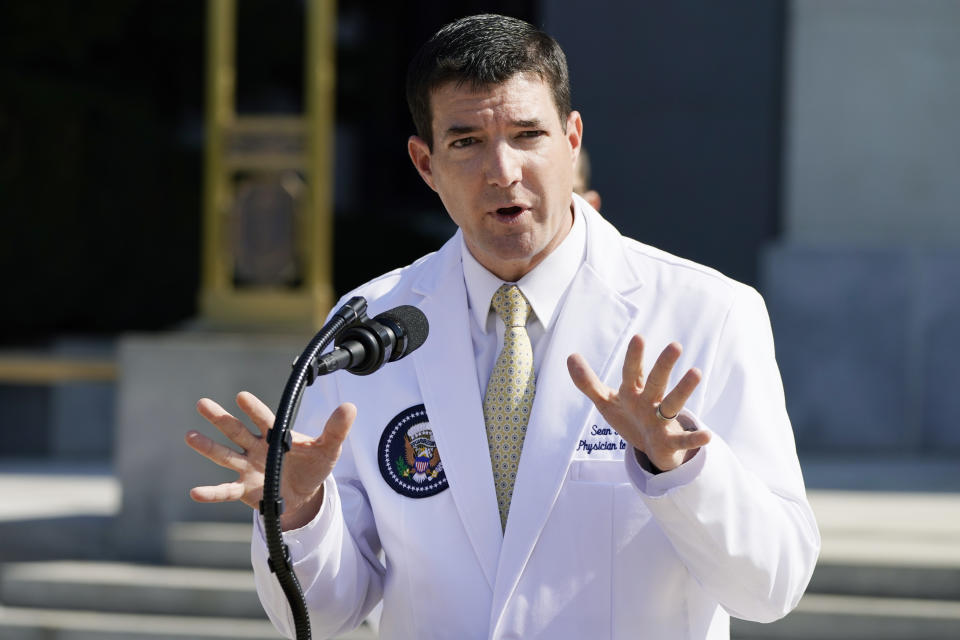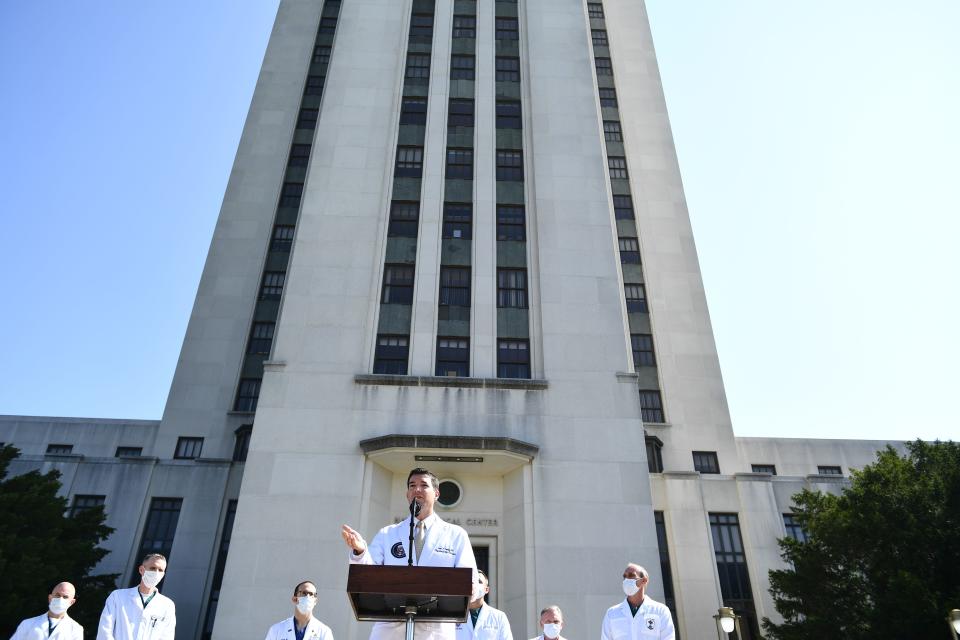Trump’s doctor admits he avoided saying president was on oxygen
In an optimistic briefing on President Trump’s condition Sunday morning, White House physician Dr. Sean Conley admitted to reporters he had tried to conceal the fact that the president had received oxygen at the White House on Friday.
Conley, joined by other members of the president’s medical team at Walter Reed National Military Medical Center, said Trump was continuing to improve and could be discharged back to the White House as early as Monday. But he disclosed that dexamethasone had been added to the president’s drug regimen, suggesting continuing concerns about an inflammatory response to the coronavirus that could damage the lungs or other organs.
Dexamethasone is a corticosteroid that is used to prevent or treat the “cytokine storm” of immune response that causes some of the worst complications of COVID-19, particularly in older patients.
Trump is also continuing to receive remdesivir, an antiviral that combats coronavirus infection.
Another doctor on the team, Sean Dooley, told reporters that Trump “has remained without fever since Friday morning. His vital signs are stable, he remains on room air, he’s ambulating himself, walking around the White House medical unit [at Walter Reed] without limitation or disability.”
“I want to reiterate how pleased we are with the President’s recovery,” Conley added.

But under questioning by reporters, Conley disclosed that on Friday morning Trump had experienced a high fever and his blood-oxygen level had dipped below 94 percent. (A normal reading would be 96 or above.) “Given these two developments, I was concerned about the possibility of rapid progression of the illness,” Conley said, and he recommended supplemental oxygen, which Trump at first refused, but when he agreed, brought his oxygen into the normal range within minutes. Later that day, Trump was taken by helicopter to Walter Reed.
At a briefing Saturday, reporters questioned Conley closely about whether and when Trump had received oxygen, but he answered evasively, saying only that the president was not currently on oxygen and had not been given it at Walter Reed.
Sunday, Conley admitted that he had intentionally avoided a forthright response, saying, “I was trying to reflect the upbeat attitude of the team [and] the president over the course of his illness. I didn’t want to give any info that might steer the course of illness in another direction, and it came off that we were trying to hide something, which wasn’t necessarily true.”
But he also avoided a direct answer to a question from a reporter about whether there was evidence of damage to Trump’s lungs as a result of the infection.
“We’re tracking all of that, there are some expected findings but nothing of clinical concern,” Conley responded, refusing to answer follow-up questions about what the “expected findings” were.

Secrecy and misinformation about Trump’s medical condition have resulted in widespread confusion and doubts about his illness. On Saturday, Conley’s account of when the president was first diagnosed with the coronavirus had to be corrected by a White House statement shortly afterward, and optimistic pronouncements have been contradicted by more alarming statements from administration officials speaking on background.
But Conley stuck to his script Sunday, ending the briefing by proclaiming, “The fact of the matter is he’s doing really well.”
Read more from Yahoo News:




